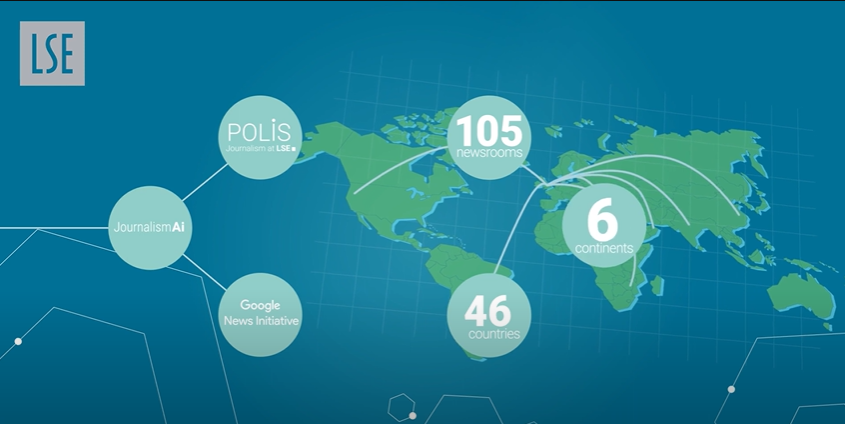As artificial intelligence continues to evolve, its application in journalism and media transforms traditional practices. For instance, AI-powered tools can analyze vast amounts of data at unprecedented speeds, enabling journalists to uncover stories that might have otherwise remained hidden. Investigative journalism, in particular, has benefited from AI tools that can sort through large datasets to identify patterns, trends, or anomalies. A good example is the tool created by the Filipino journalist which helps reporters to uncover instances of mismanagement or corruption in lengthy documents. AI solutions such as these have the potential to revolutionize how stories are reported, providing deeper insights and more comprehensive coverage.
Since the public is shaped by the information it receives through the media, AI tools play a particularly important role in this process. However, there are many doubts about the role of AI in media and journalism in general. Critics argue that relying on AI too strongly might compromise the human aspect of storytelling, which includes cultural context, empathy, and ethical judgment. Yet, despite the skepticism, there are already initiatives in newsrooms to incorporate AI tools for content generation, striking a balance between human oversight and technological efficiency.
A study involving over 100 media organizations from 46 countries regarding the use of AI tools in their work concluded that more than 75% of them had already started using AI tools. This study of the London School of Economics shows that media professionals most often cited two reasons for using AI more: the low cost of content generation and the fact that there is no need for specific technological skills to use such tools. This development of technology could be seen as a chance to survive for smaller media outlets - local and regional media in an era when resources are limited, and newsrooms are contracting.
 Screenshot from the YouTube Channel, PolisLSE
Screenshot from the YouTube Channel, PolisLSE
In the United Kingdom, “Newsquest”, the UK’s second biggest regional news publisher, has published thousands of articles written with the assistance of artificial intelligence, and last year, this media company created a new position within the newsroom, AI-powered reporter, with the primary goal of expanding the use of AI in newsrooms. Currently, “Newsquest” has several AI-assisted reporters and continues to grow this team by creating new job positions. This reflects a trend in the newsroom, where AI is being used more and more frequently to automate repetitive tasks, freeing up journalists to work on more intricate and creative areas of news reporting.
Another interesting example is the case of the British journalist Sophia Smith Galer who has trained an AI model to create a chatbot that helps journalists make vertical videos. She named this application Sophina. This application is a prime example of how artificial intelligence (AI) may be utilized to improve content creation, while also offering creative solutions that simplify journalists' tasks.
 Sophia Smith Galer and her chatbot Sophina
Sophia Smith Galer and her chatbot Sophina
To get the most out of AI tools like ChatGPT, Copilot, Adobe Firefly, etc., media professionals need to be trained to write a good prompt correctly so that they can include AI as effectively as possible and be ethical in their work. So, understanding how to write right prompts can significantly improve the quality of AI-generated content, making it more relevant and accurate. Of course, there is the possibility of misusing these many opportunities offered by AI, as shown by the case of a journalist in the United States who had created fake quotes and articles using AI tools. Therefore, media companies must work with their employees to prevent this misuse by preparing them to use AI tools ethically. They must take proactive initiatives to educate their employees on the advantages and drawbacks of AI, emphasizing the significance of transparency and accountability.
Despite doubts and skepticism about the use of artificial intelligence, one thing is certain: AI will play an increasingly important role in our everyday lives because AI is constantly evolving, changing, and improving. As AI becomes more sophisticated, its integration into newsrooms will likely expand beyond just content creation. Therefore, media companies should also engage AI experts to first of all understand the opportunities offered by this technology, and then implement AI tools to fulfill their goals and objectives. Specific AI tools for journalists are being developed rapidly. Newsrooms and journalists can save time and money by using these tools to write and create various media content, including audio, video, etc.
Therefore, to prepare for the new era of journalism, media professionals must be skilled in using AI tools - to understand what they can do, what the risks are, learn how to minimize them, and how to use them ethically and responsibly to create content that aligns with professional journalism standards.
Background illustration: generated by the author with Dall-E 3.